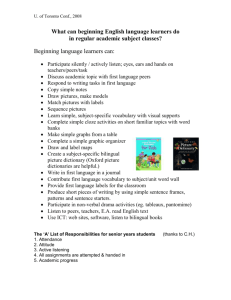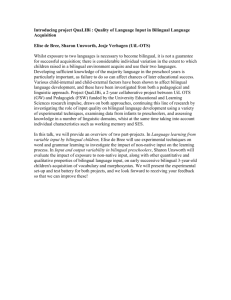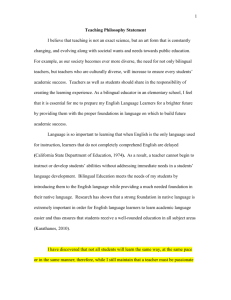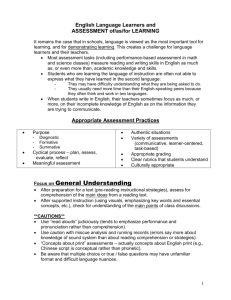Read her comments.
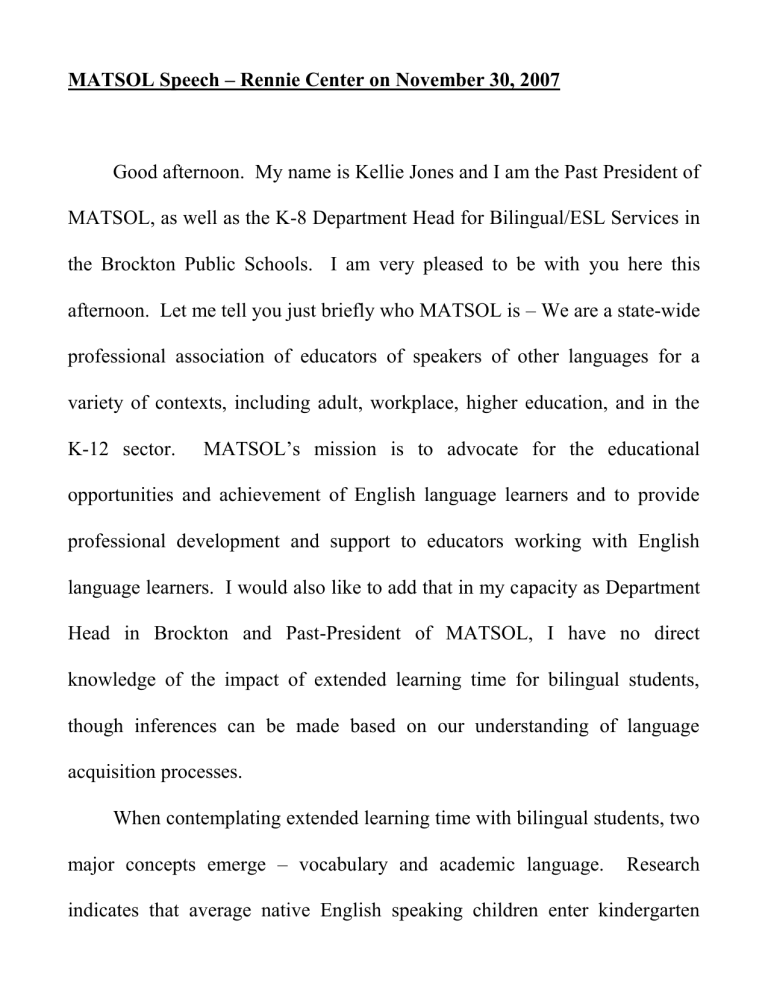
MATSOL Speech – Rennie Center on November 30, 2007
Good afternoon. My name is Kellie Jones and I am the Past President of
MATSOL, as well as the K-8 Department Head for Bilingual/ESL Services in the Brockton Public Schools. I am very pleased to be with you here this afternoon. Let me tell you just briefly who MATSOL is – We are a state-wide professional association of educators of speakers of other languages for a variety of contexts, including adult, workplace, higher education, and in the
K-12 sector. MATSOL’s mission is to advocate for the educational opportunities and achievement of English language learners and to provide professional development and support to educators working with English language learners. I would also like to add that in my capacity as Department
Head in Brockton and Past-President of MATSOL, I have no direct knowledge of the impact of extended learning time for bilingual students, though inferences can be made based on our understanding of language acquisition processes.
When contemplating extended learning time with bilingual students, two major concepts emerge – vocabulary and academic language. Research indicates that average native English speaking children enter kindergarten
with 3000-6000 expressive vocabulary words and 8000-10,000 receptive vocabulary words. Native English speakers then acquire 1500 new words per year in grades K-2 and 3000 new words in each subsequent year. This is because as students increase in grades, the level of content specific technical vocabulary also increases. Bilingual students, who may enter any grade with little or no English language skills, must acquire vocabulary at a higher rate in order to be academically successful. A recent study also indicates that if teachers could get students to read high quality, appropriate texts for an extra
25 minutes per day, students could acquire an extra 2000 vocabulary words per year. Extended learning time could certainly increase the direct reading time of students, and thus close the vocabulary gap of English language learners.
There is a similar process in the acquisition of academic language. Dr.
Jim Cummins’, from the University of Ontario, research states that while social language is acquired within 2-3 years in the host country, academic language takes generally 5-7 years, and may take longer if the child does not have native language literacy or has limited or interrupted formal schooling.
This length in the acquisition of academic language is due to native English speaking peers’ yearly increase of academic content and skill knowledge, the
de-contextualized nature of academic language, as well as the increasing complexity of concepts and skills. In addition, bilingual students must acquire the specific language structures and culturally based writing conventions of each particular content area. For example, in science the simple present is often used to indicate a truth or a fact. However, in social studies, often the simple past and past progressive are used to indicate that one action was occurring in the past when another action interrupted it. Enabling bilingual students to engage meaningfully in academic content that is appropriate for their proficiency level for a greater length of time might increase the acquisition of academic language and close the achievement gap that currently exists.
I thank you for your time and attention. Thank you again.




